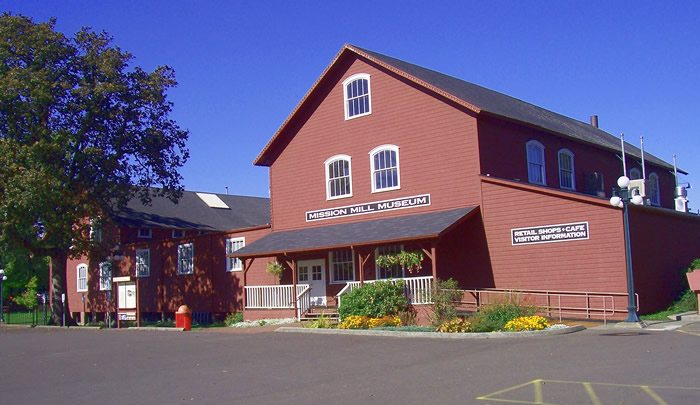
Thomas Kay Woolen Mills / Mission Mill Museum
Marion Co. | Oregon | USA
Watersource: Mill Creek via millrace
Thomas Kay Woolen Mills / Mission Mill Museum
Take 12th St north from Pringle Parkway SE/Or 22, go about a block, turn right on Mill St SE, then left in Mission Mill Complex parking lot.

The Wool Warehouse building that now serves as the museum entrance, houses gift shops, and contains the Salem's Visiter Center.
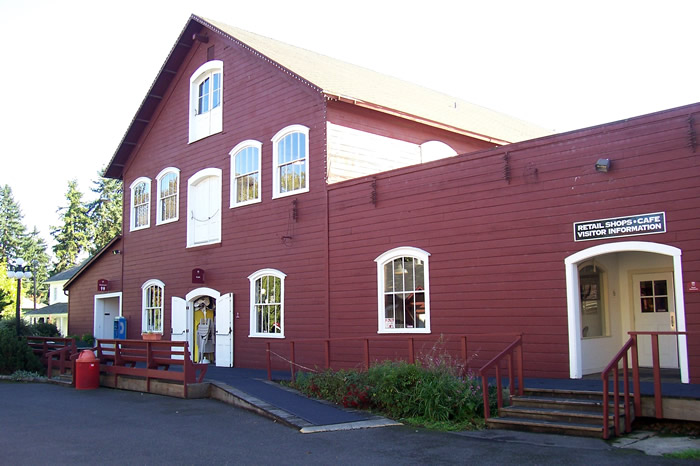
The opposite side of the Wool Warehouse building inside the mill museum complex. The old wool warehouse also houses The Mission Mill Cafe, great for lunches and teas.
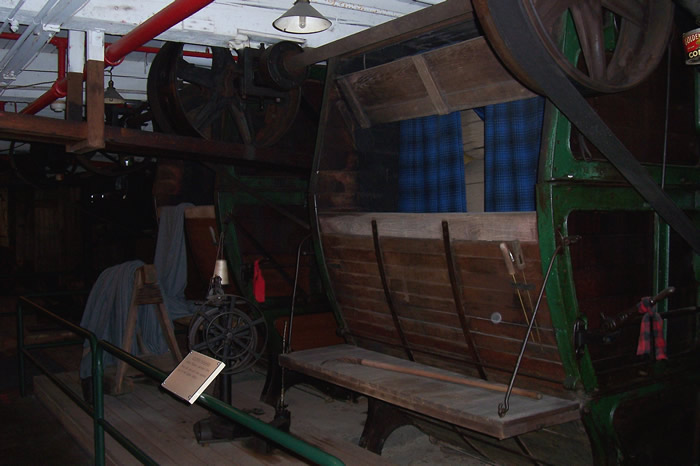
Some type of gear-driven cloth washer.
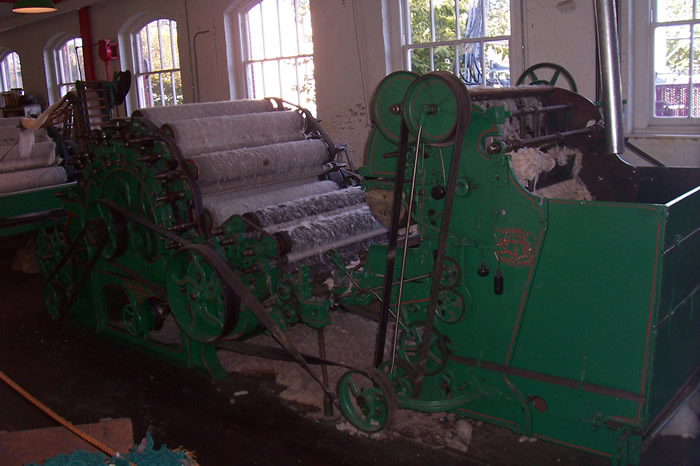
Wool carding machine. Carding the wool takes out the tangles. The wool fibers are combed with long metal prongs attached to rollers that straighten tangles and remove dirt and other impurities.
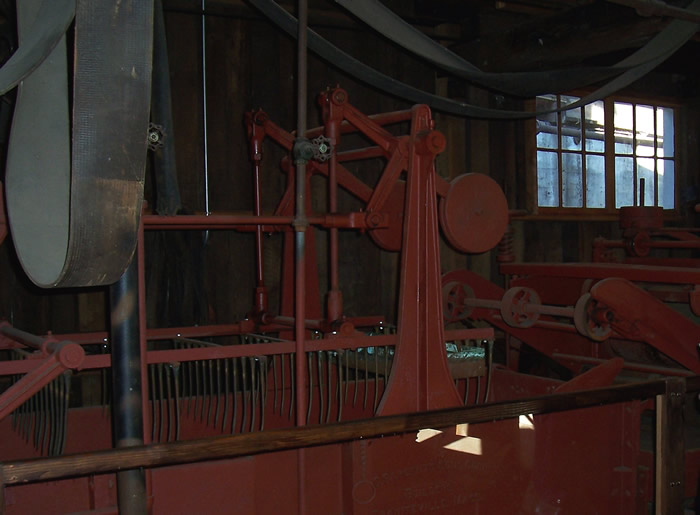
Another type of machine to wash the cloth, the prongs would cycle in one direction pulling the cloth along, raise up, occilate back, dip down and repeat the process, moving the cloth along through the vat of washing solution.
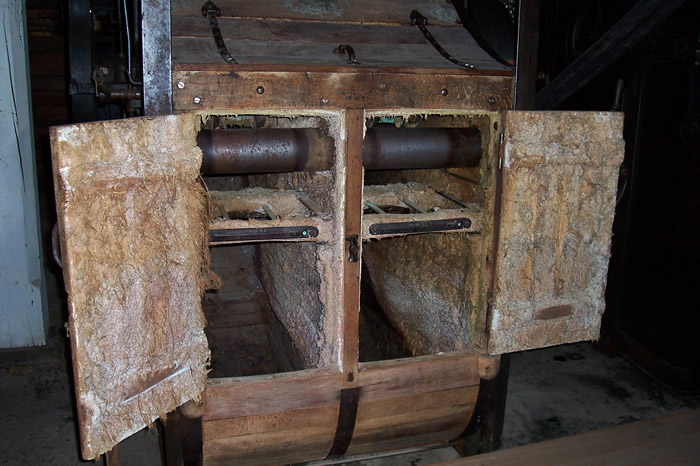
Woolen fabrics are washed with friction, heat and soap in this type of rotary fuller, which shrinks the woolen garment during production, tightening the weave, making a "fuller",stronger fabric.
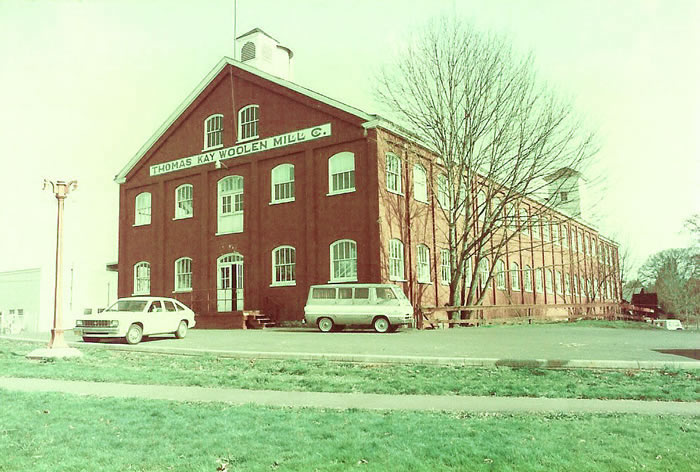
A photo from 1983 of the Thomas Kay Woolen Mills main building. The 35mm film was one that emphasized the blues and greens, making it extremely difficult to get it back to normal colors. New photos will be coming shortly to replace this one.
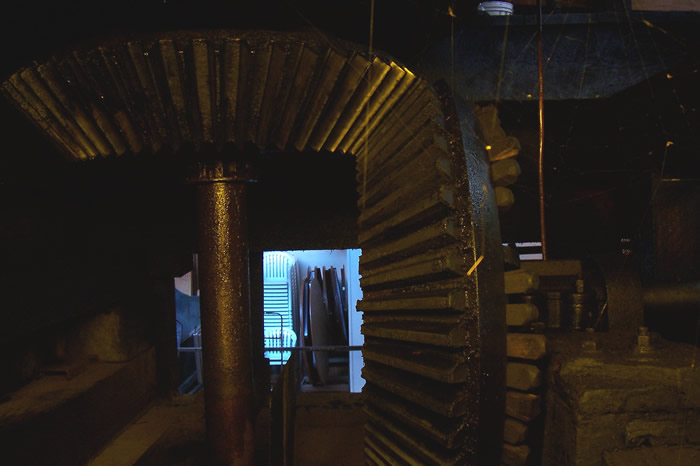
Bevel gearing that tranfers the direction of the power from the turbine to a horzontal shaft, to power the equipment at the mill. Notice the teeth (splines) on the vertical gear connected to a horizontal shaft are wood, easily replacable. Usually on half of a gearing mesh or union would have replacable teeth, rather than replacing the costly entire gear end. Also, the wear would be on the gear flange containing the wooden teeth, making for less expensive repairs.
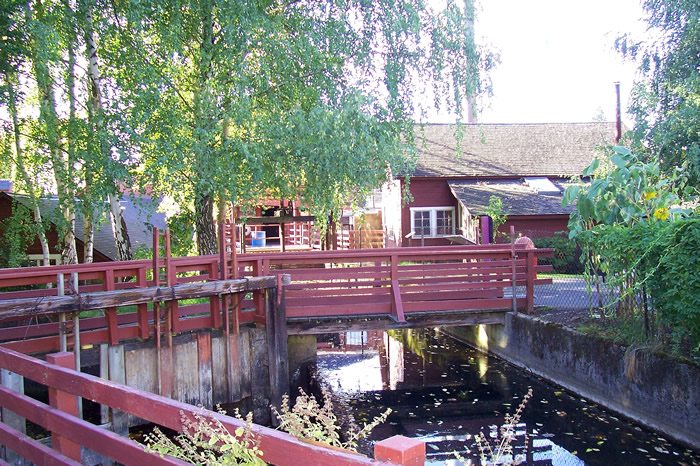
The millrace, headrace as it approaches the mill main building where wool processing, carding, combing, spinning, weaving, preshrinking, and dying were all carried out. The smaller building visible beyond the race, on the left, is the Dye House. The building on the right is the Menser Machine Shop, still working today. The machine shop kept the machinery in repair and actually made parts to replace wore and broken parts of machinery. Millwrights worked here to keep the production lines moving and operating to schedule.
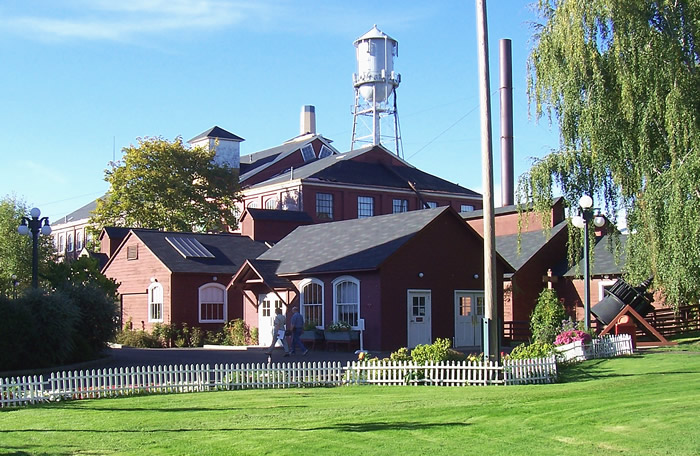
The Dye house and the Water Power Exhibit Building frame the larger main mill structure. The photo was taken from the porch of the Parsonage
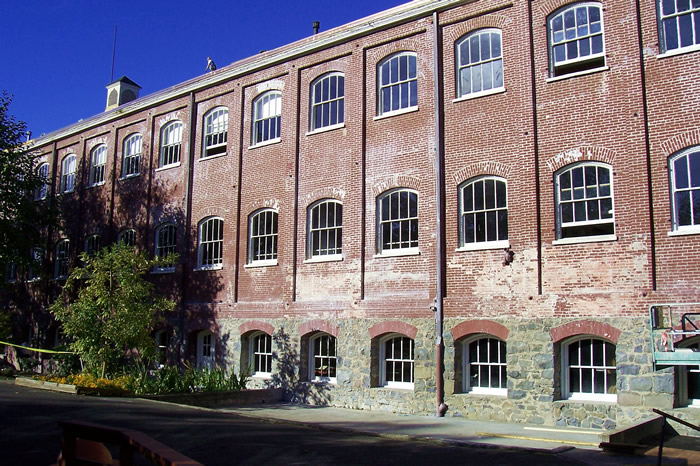
The south side of the mill structure looking towards the west. Contractors were busy refurbishing the brickwork of the building in 2006.